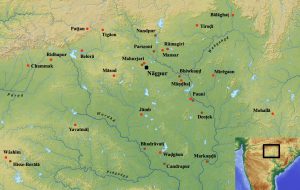| Metadata | |
|---|---|
| Object ID | OB00179 |
| Title | Hisse-Borala Demon's Stone |
| Subtitle | |
| Inscription(s) | IN00192 |
| Child Object | |
| Parent Object | |
| Related Objects | |
| Responsibility | |
| Author | |
| Metadata recorded by | Dániel Balogh |
| Authority for metadata | |
| Metadata improved by | Dániel Balogh |
| Authoriy for improved | |
| Description | |
| Material | Stone / basalt |
| Object Type | Stone slab |
| Dimensions: | |
| Width | 122 |
| Height | 33 |
| Depth | 23 |
| Weight | |
| Details | A slab of "a variety of basalt stone" (Gokhale 1967: 1). Presently in three fragments. Since their history is shared, the fragments are not represented separately here. |
| History | |
| Created: | |
| Date | |
| Place | |
| Other ancient history | |
| Found: | |
| Date | 1964 |
| Place | Hisse-Borālā |
| Other modern history | |
| Latest: | |
| Date | |
| Place | |
| Authority | |
| Details | Discovered for scholarship by Shobhana Gokhale in 1964, near the village of Hisse-Borālā (Hisse Borhala on Google Maps, at or near 20.034285, 77.152062). The stone, known to villagers as "Demon's Stone," was in a nullah of the river Vatsagulmā, near the "remains of an ancient brick wall beside an old lake" (Gokhale 1967: 1; possibly 20.047228, 77.161011?). This wall is locally called pāḷu, which means "bank of a lake." It was broken in two when found, and one of the pieces broke again in two while being transported to the Collector's office at Akola. It appears that photographs had been taken by Gokhale before this second fracture; conversely, the plates in Kolte 1965 show that this resulted in the loss of the beginning of line 1, and a vertical break largely obliterating "kare" in line 2 and slightly affecting "yuge" in line 3. |
| Notes | |

